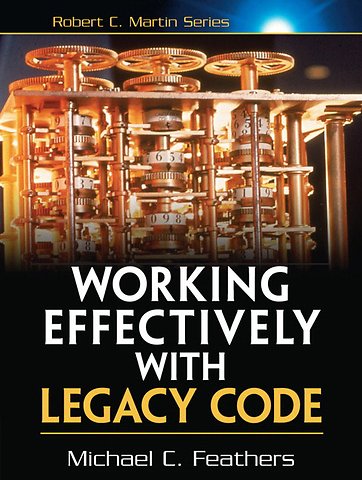Working Effectively with Legacy Code
Paperback Engels 2005 1e druk 9780131177055Samenvatting
Get more out of your legacy systems: more performance, functionality, reliability, and manageability
Is your code easy to change? Can you get nearly instantaneous feedback when you do change it? Do you understand it? If the answer to any of these questions is no, you have legacy code, and it is draining time and money away from your development efforts.
In this book, Michael Feathers offers start-to-finish strategies for working more effectively with large, untested legacy code bases. This book draws on material Michael created for his renowned Object Mentor seminars: techniques Michael has used in mentoring to help hundreds of developers, technical managers, and testers bring their legacy systems under control.
The topics covered include:
- Understanding the mechanics of software change: adding features, fixing bugs, improving design, optimizing performance
- Getting legacy code into a test harness
- Writing tests that protect you against introducing new problems
- Techniques that can be used with any language or platform with examples in Java, C++, C, and C#
- Accurately identifying where code changes need to be made
- Coping with legacy systems that aren't object-oriented
- Handling applications that don't seem to have any structure
This book also includes a catalog of twenty-four dependency-breaking techniques that help you work with program elements in isolation and make safer changes.
Specificaties
Lezersrecensies
Inhoudsopgave
Introduction.
Part 1: THE MECHANICS OF CHANGE.
1. Changing Software.
2. Working with Feedback.
3. Sensing and Separation.
4. The Seam Model.
5. Tools.
Part 2: . CHANGING SOFTWARE.
6. I Don't Have Much Time and I Have To Change It.
7. It Takes Forever To Make a Change.
8. How Do I Add a Feature?
9. I Can't Get This Class into a Test Harness.
10. I Can't Run This Method into a Test Harness.
11. I Need to Make a Change. What Methods Should I Test?
12. I Need to Make Many Changes In One Area Do I Have To Break.
13. I Need To Make a Change but I Don't Know What Tests To Write.
14. Dependencies on Libraries Are Killing Me.
15. My Application Is All API Calls.
16. I Don't Understand the Code Well Enough To Change It.
17. My Application Has No Structure.
18. My Test Code Is in the Way.
19. My Project Is Not Object-Oriented. How Do I Make Safe Changes?
20. This Class Is Too Big and I Don't Want It to Get Any Bigger.
21. I'm Changing The Same Code All Over the Place.
22. I Need To Change a Monster Method and I Can't Write Tests for It.
23. How Do I Know That I'm Not Breaking Anything?
24. We Feel Overwhelmed. It Isn't Going To Get Any Better.
Part 3: DEPENDENCY BREAKING TECHNIQUES.
25. Dependency Breaking Techniques.
Appendix: Refactoring.
Glossary.
Vergelijkbare boeken
Anderen die dit boek kochten, kochten ook
Rubrieken
- advisering
- algemeen management
- coaching en trainen
- communicatie en media
- economie
- financieel management
- inkoop en logistiek
- internet en social media
- it-management / ict
- juridisch
- leiderschap
- marketing
- mens en maatschappij
- non-profit
- ondernemen
- organisatiekunde
- personal finance
- personeelsmanagement
- persoonlijke effectiviteit
- projectmanagement
- psychologie
- reclame en verkoop
- strategisch management
- verandermanagement
- werk en loopbaan













